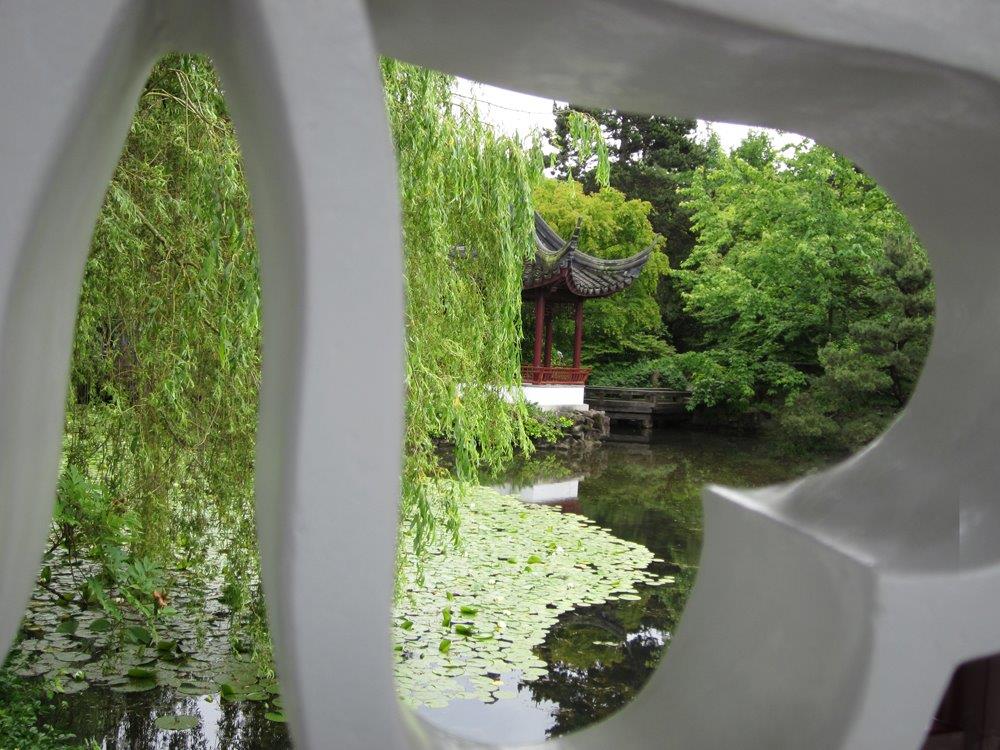
Text and Photos by Mary L. Peachin
Vol. 22, No. 2, November, 2019
Bob Sung’s tour, A Wok Around Vancouver’s Chinatown, is a labor of love, one in which this fourth generation Vancouverite shares family roots blended with cultural history.
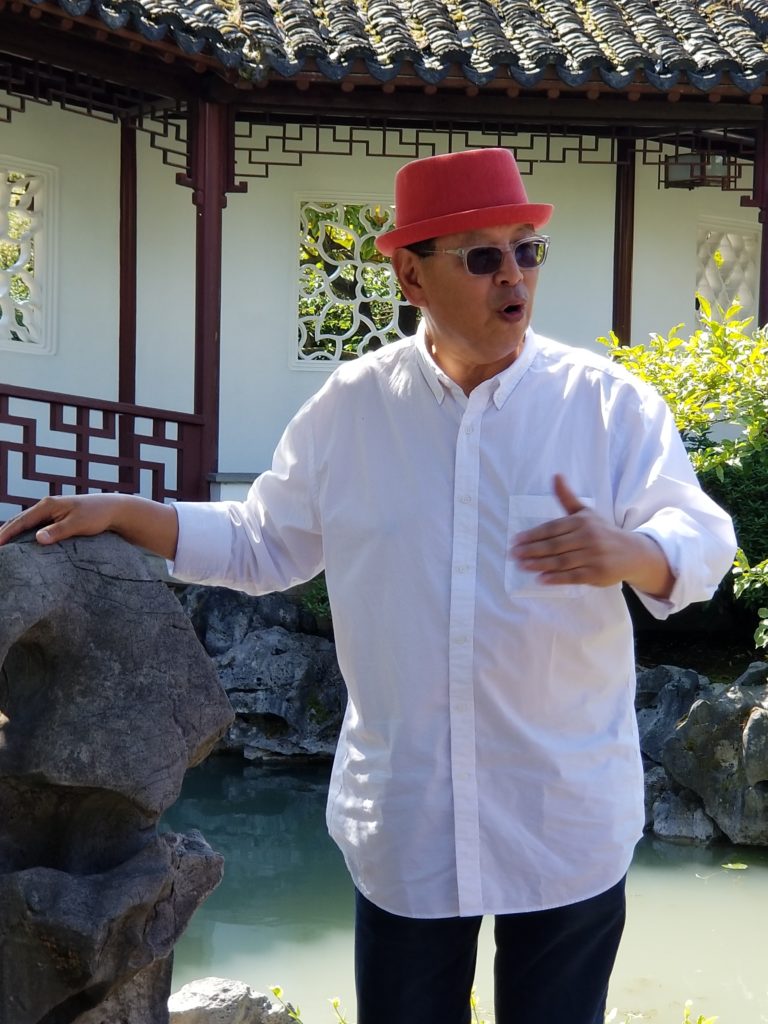
During the frenetic days of the mid-1800s gold rush, Vancouver’s Chinese population were confined to a restricted ghetto. Only in recent years has the Canadian city’s Chinatown, a place known for its classical gardens, historic landmarks, exotic and diverse foods, ethnic cookware, and exotic herbal medicine shops, been identified by a colorful new Pender Street welcome entry gate.
Sung’s grandfather migrated to Vancouver in 1910, about the same time as Dr. Sun Yat-Sen. Bob shares, “The doctor worked as a Freemason, while my grandfather established and became the first editor of the Chinese Times.” This historic background makes it appropriate that the tour begin in the garden of his grandfather’s friend, one who would become a revered revolutionary and political leader in China.
Dr. Sun Yat-Sen Classical Chinese Garden is a Suzhou garden that exemplifies the three Chinese Philosophical Traits of Taoism, Confucianism, and Buddhism.
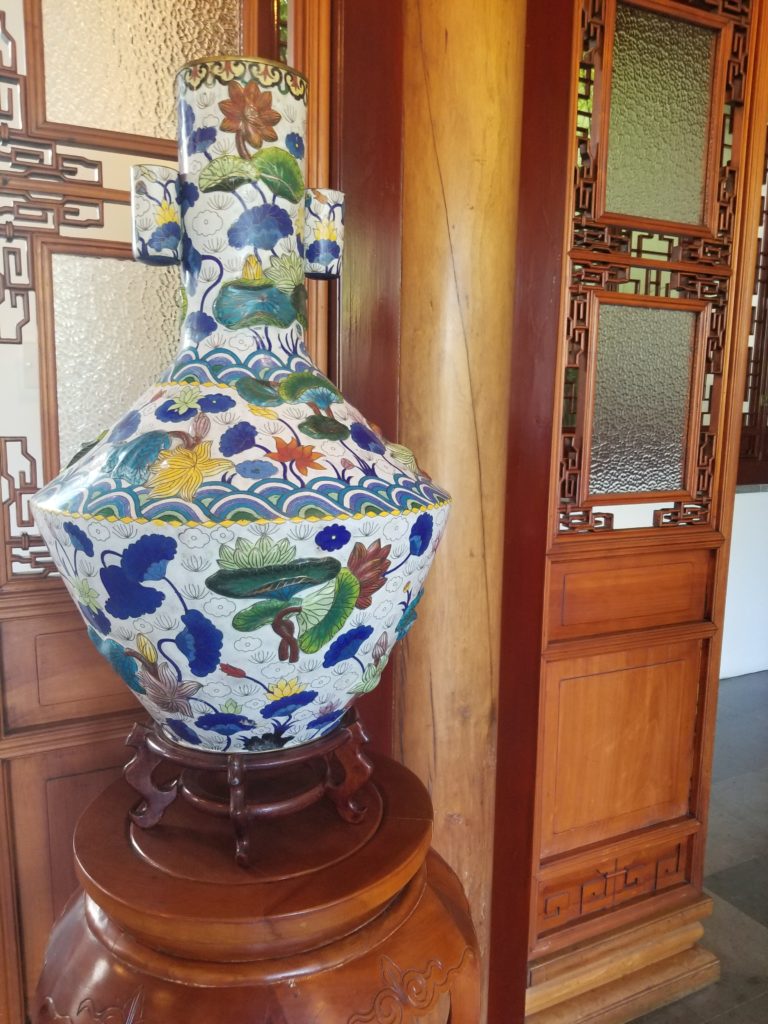
Three hundred artisans helped build the Classical Gardens without the use of nails. A tongue-and-groove technique was used to mold the Shanghai imported teak wood. The steel rooftop is pointed “to ward off evil spirits.” There is ying and yang to the garden. Symbolic plants include bamboo, for strength and pliability, and gingko trees, for long life. Visitors find solace, some taking time to meditate or gracefully performing a few of the hundred movements of Tai chi. Bob explains philosophic interpretations seen in the different elements of architecture that many visitors would overlook.
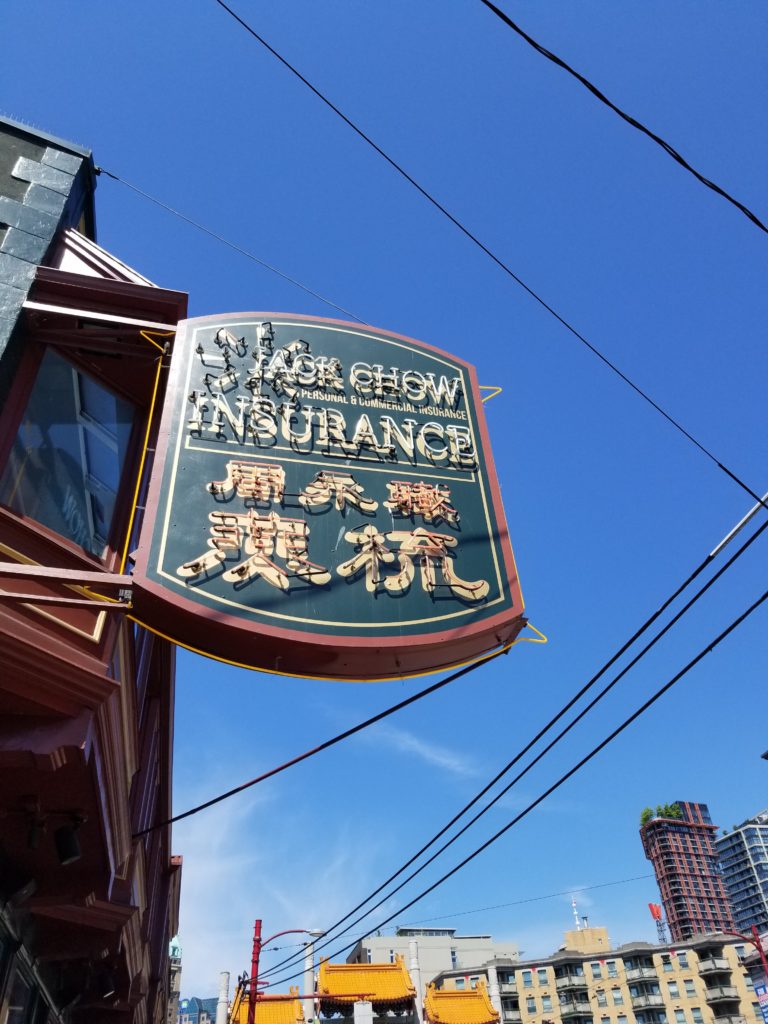
After leaving the garden, the tour heads to the nearby corner of Carrall and Pender Streets, both major Chinatown streets. The cornerstone intersection is home to a historic tiny office. Built in 1913, this sliver of an office is currently home to Jack Chow Insurance.
A stop at Ming Wo Cookware gives Bob the opportunity to share the value and “seasoning” of the Chinese wok as well as the proper usage of chopper knives. Forged on rolled steel, the wok needs to be “aged” by cleaning and curing with vegetable oil. Bob cautioned to never use olive oil, “It will burn.” After the wok is seasoned, garlic and ginger — peeled with a spoon, then chopped — are the basic flavors for cooking most Chinese dishes. Most wok cooking can be quickly stir-fried or steamed by placing a wooden basket inside the stainless wok.
While walking down Keefer Street, opera music could be heard from second-floor windows along with clicking mahjongg tiles from games being played at Yip Lang, the oldest building in Chinatown.
Stopping at Newtown Bakery grumbling tummies are given a treat of buttery, delicious fresh apple tarts baked. A thousand tarts are sold daily along with other culinary items including steamed buns, egg custard tarts, and tapioca and rice cakes.
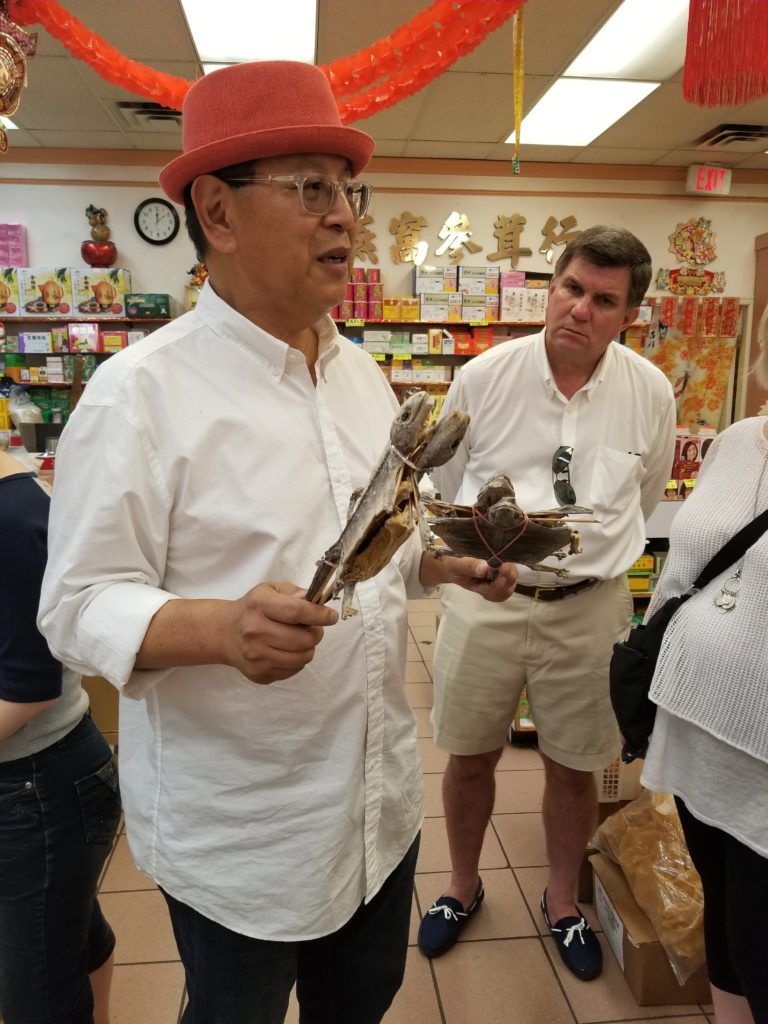
Guo Hua Herbal Medicine store gives Bob the opportunity to share Chinese herbal medicines remedies. The majority of these dried ingredients are consumed in soups or tea. Conpoy scallops improve urinary tract or kidney function, gecko lizard is used for asthma or high fevers, shark’s fin is thought of as remedy for various cancers, and Asian cliff-dwelling bird’s, hardened by saliva nest improves libido, alleviates asthma, improves focus, and enhances the immune system. These various items can sell in the hundreds of dollars for several ounces.
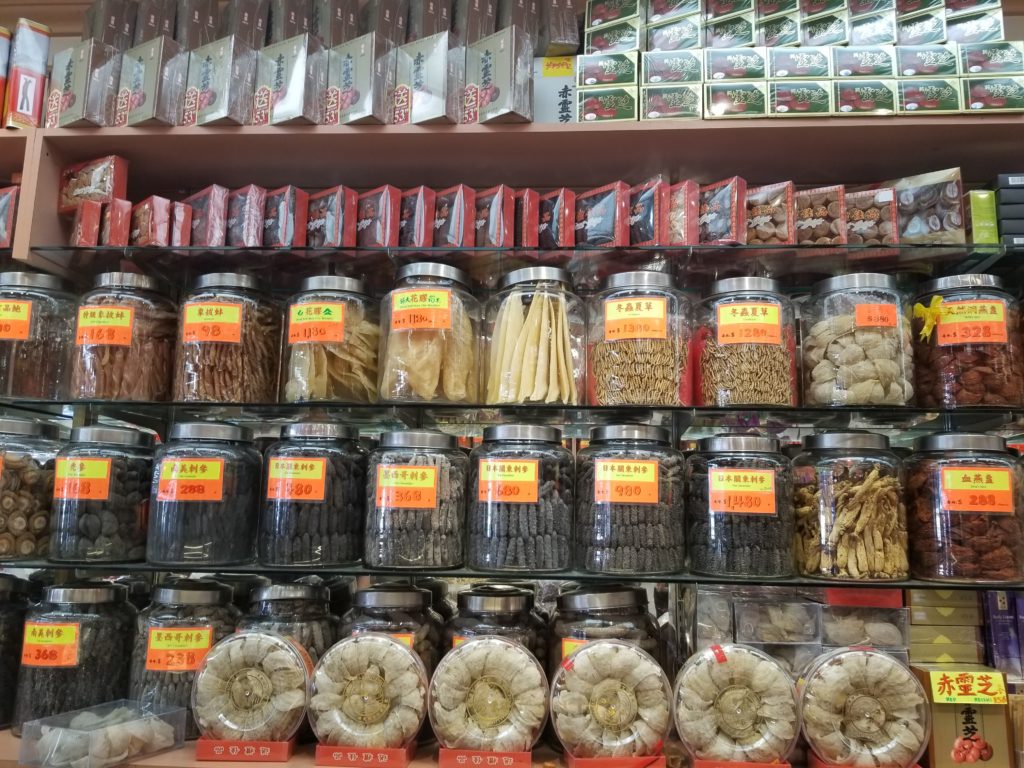
Stopping to browse a store window filled with Chinese symbolic gifts, lucky red envelopes or hóngbāo which symbolizes good luck and prosperity. Most envelopes are used to gift money for celebrations. There were also Hoong Bow incense sticks, elaborate packages of food, money, clothing, pricey paper items imitating Gucci, Vuitton and other designer labels used to burn in a tin urn for deceased friends or family members (not unlike the Mexican celebration of Dia de los Muertos.)
It was time for another snack as the ten of us stopped where Bob had a friendly butcher slice chunks of barbequed pork while we observed cases of chicken and duck. A few stores down, there were tanks of live seafood and fish, followed by shops filled with fruits and vegetables. Less familiar were Gai Lan or Chinese broccoli, Bok Choy, soft and medium firm Tofu, ginger root, guava, mangoes, mangosteen, and oranges and kumquats, the latter two symbolic of wealth or abundance. The Chinese tradition of bearing gifts oranges when visiting friends means bestowing abundance upon them.
Finally it was time for the promised dim sum lunch. It was great to have a large enough group, similar to those enjoyed by many Chinese families, to be able to taste so many delicacies. Fumbling with our chop sticks, we enjoyed Ha Gow or shrimp dumplings, Eye Gwa or minced shrimp with Asian eggplant, Ngoh My Faun or sticky rice wrapped in banana leaf. There was Foong Jow or braised chicken feet, Lo Bahk Goh, a steamed daikon or white radish cake, and Tseun Joh Geuhng, a tofu skin rolled with enoki mushrooms and black fungus. It was a feast.
The tour wouldn’t be complete without a tea-full goodbye. The Chinese Tea Shoppe gave Bob the opportunity to demonstrate the method of preparation for Green, Oolong, and Jasmine teas. “Restorative ginseng tea is an expensive, acquired taste.”
Inspired by an awareness of the public’s ignorance about Chinatown, Bob Sung developed this cultural and culinary tour motivated by a proud century of local history. He realized that “these bustling Chinatown streets could be overwhelming to the uninformed.” He’s right and we walked away satiated and better informed. As we said goodbye to Bob and Chinatown, we were grateful to him for helping us to better understand its hustle and bustle.
www.awokaround.com or 604-7369508
